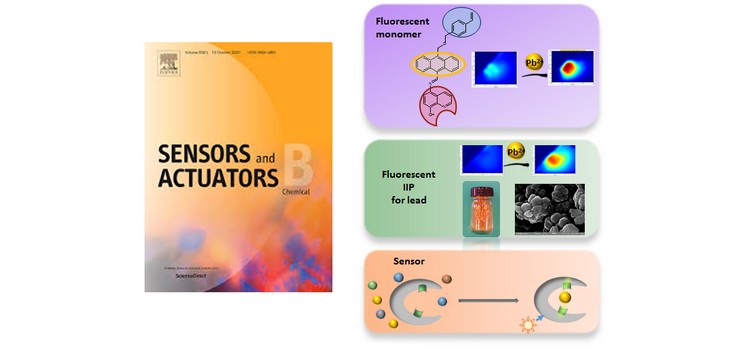

A new fluorescent Pb(II) imprinted polymer (Pb(II)–IIP) was synthesized for the selective detection of this contaminant in natural water. To play the sensing role, a fluorescent probe specific to Pb(II), based on anthracene coupled to 5-amino-8-hydroxyquinoline and a styrene moiety, was used as a functional monomer. It was associated with ethylene glycol dimethacrylate as cross-linker (EGDMA) to prepare microbeads of IIP and NIP (corresponding non-imprinted polymer) via precipitation polymerisation in DMSO-2-methoxyethanol (1:1, v/v) mixture. Solid-state 13C NMR spectroscopy was used to analyse the structure of the polymers and attest the integration of the fluorescent monomer in the polymer matrix. The morphology of the prepared materials was analysed by scanning electron microscopy and nitrogen adsorption/desorption. Results showed high mesoporous materials with important surface areas of 346 and 232 m2·g−1 for IIP and NIP, respectively. Polymers fluorescence properties revealed that the obtained IIP showed remarkably selective fluorescent on-off characteristics towards Pb(II) compared to NIP, emphasizing an imprinting effect. IIP fluorescent calibration curve exhibited a linear range from 7.1–60 μg·L−1 in pure water with a low limit of detection of 2.1 μg·L−1. The synthesized IIP was successfully applied to the determination of Pb(II) in tap water, mineral water and seawater samples.
Ion imprinted polymer, Fluorescence, Sensor, Lead
